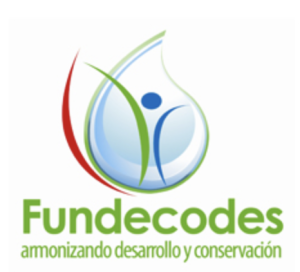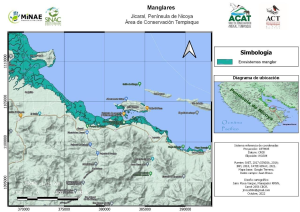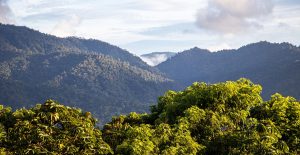
Karen Mogensen Private Reserve
The reserve is a Core Protected Area under the Guanacaste Umbrella Project. It is located on the Nicoya Peninsula on Costa Rica’s north-west coast. The reserve is managed by the Ecological Association of Paquera, Lepanto, & Cóbano (ASEPALECO), a nonprofit NGO founded in 1991, which also provides environmental education programs, a firefighter training program, a recycling center, an ecolodge, and a biological and climate research station.

The reserve is named in honor of Karen Mogensen who, with her husband Nicolas Wessberg, founded the national park system in Costa Rica. Karen died in 1994, soon after the reserve was established.
In the 1950s and 60s, the Nicoya Peninsula had been heavily logged to make way for cattle farming, in response to the boom of the beef industry, and the virgin forest was disappearing at an alarming rate. By the 1990s, only 25% of the peninsula’s forest remained.
Through perseverance and a strong commitment to conservation, the reserve has tripled in area to 960 hectares (2370 acres), but there is still much to be done. The loss of forests, which has accelerated to unprecedented rates in the Nicoya Peninsula in the last few years alone, has had severe consequences for wildlife. Many species struggle to find suitable habitats. The region’s native flora and fauna face a bleak future if we do not act urgently.
FUNDECODES – Our partner for the Guanacaste Umbrella Project
 The project steward is FUNDECODES, the Foundation for Equilibrium between Conservation and Progress. The charitable NGO was founded in 2000.
The project steward is FUNDECODES, the Foundation for Equilibrium between Conservation and Progress. The charitable NGO was founded in 2000.
FUNDECODES in the context of this project is undertaking the restoration of mangrove areas that were degraded by installing on them salines or shrimp farms, thereby losing their complete vegetation. The main labor is establishing seawater canals, in order to recreate the living conditions for these vital ecosystems. These active nature conservation establishment areas could not be validated as Core Conservation Area when it was first submitted in 2014, because SINAC, the Costa-Rican National Conservation Area System automatically becomes the owner of any area under mangrove, and by the time of project submission, SINAC was not allowed to sell any ecosystem services. Therefore, FUNDECODES is treating the mangrove re-establishment as a project in the Commercial Buffer Zone, because of its considerable socio-economic benefits.
In 2019, FUNDECODES together with SINAC submitted the Guanacaste Umbrella Project, covering the three Conservation Areas (Costa-Rican term) of Guanacaste, Tempisque and Arenal Tempisque, which was approved by the GCS after its validation.
Jicaral Mangrove Restoration
As of 2015, Costa Rica has a mangrove extension of 34,100 hectares.
There have been several causes that contributed to the decline in mangrove forests, among those are the construction of ponds for shrimp farming, the construction of salt mines, and the change in the use of the land for livestock activities or hotel buildings and tourist infrastructure, mainly in recent years on the Pacific coast.
The Jicaral mangrove swamp is located on the western coast of the Gulf of Nicoya, belonging to the Puntarenas Province. In Jicaral, an area of Puntarenas since 60 years ago, salt extraction and processing and shrimp farming have been carried out.

A study carried out in 2014 estimates that the mangrove ecosystems of the Nicoya Gulf can store up to 57% of the total carbon accumulated in the entire Gulf.
In the presence of these threats to the mangrove ecosystems, the FUNDECODES and the National System of Conservation Areas SINAC have created the new regional strategy for the management and conservation of mangroves in the Nicoya Gulf Costa Rica. The objective is to strengthen local policies and programs for protection, recovery and sustainable use of the ecosystem, as well as to contribute to the improvement of life quality of the inhabitants, which heavily depends on the goods and services of the mangrove.
Since 2014, FUNDECODES, supported by the sale of GCS Conservation Credit Units (CCU), have excavated canals, in order to allow the seawater to flow into the area again. Some of the areas were left to natural regeneration, while on others, replanting of black mangrove (Avicennia germinans) seedlings took place. The seeds were collected in surrounding areas.
Project sponsors are the enterprises Ristic and Alnatura, supporting the project with 10-year contracts.
GCS News

GCS has a new website
Offenburg, October 2023 – The Global Conservation Standard has a new web presence. Besides a cleaner appearance, now you can view projects on the map, find pictures and more information on them.
© 2023 Global Conservation Standard